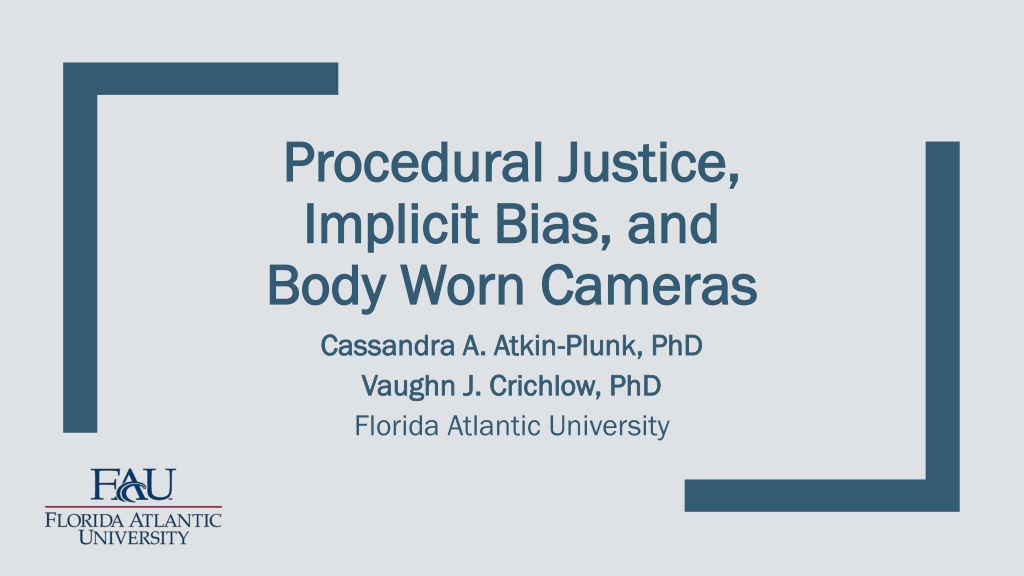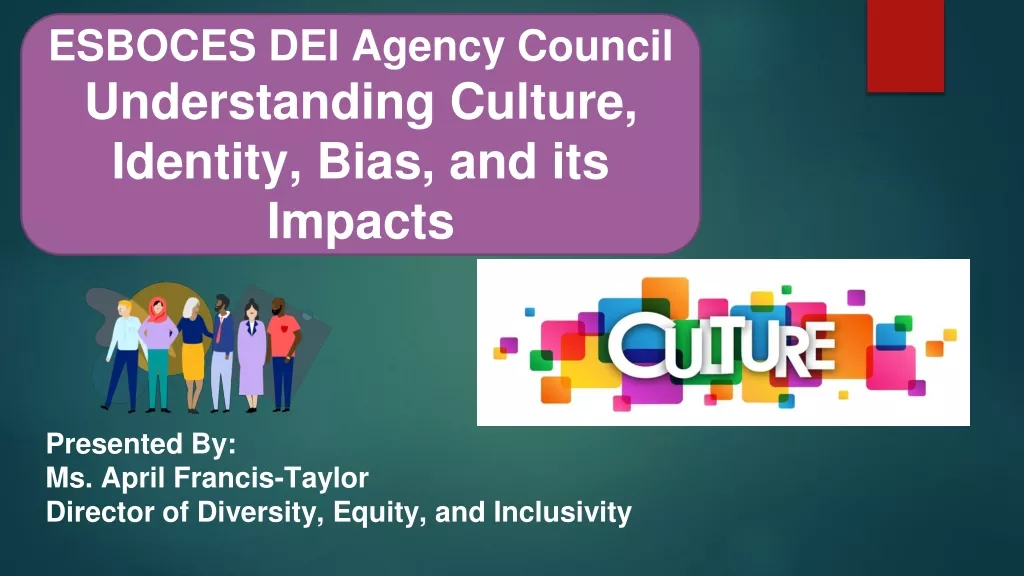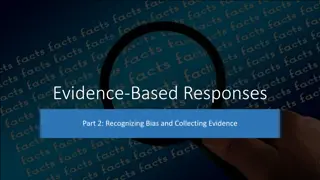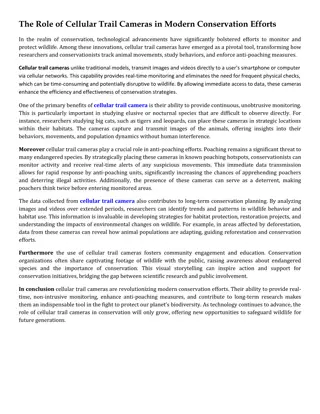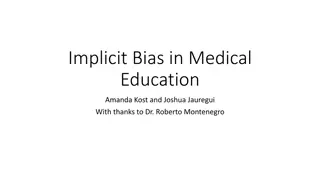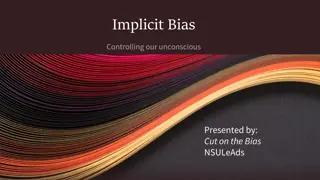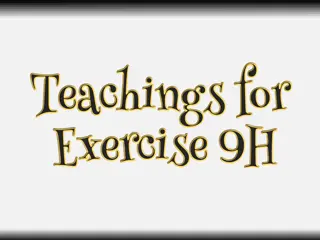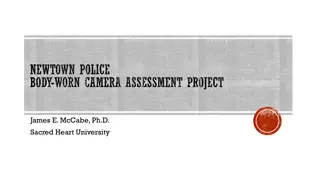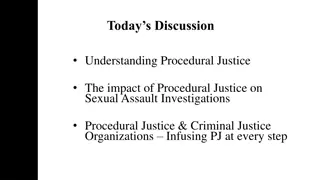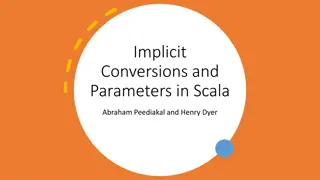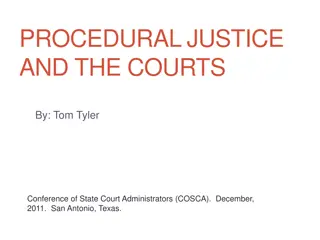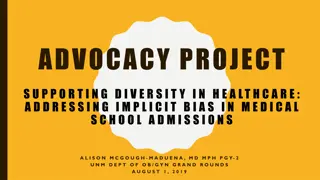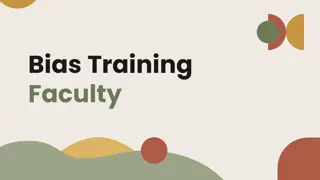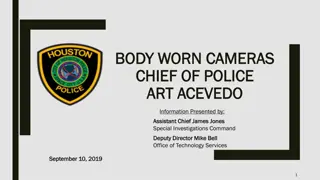Understanding Procedural Justice, Implicit Bias, and Body Worn Cameras
This content covers the concepts of procedural justice, implicit bias, and body-worn cameras in the context of law enforcement. It explores the importance of procedural justice, strategies for enhancing it, and its significance in policing, with a focus on fairness and legitimacy. The images provided offer insights into the elements and focus of procedural justice, shedding light on the idea of fairness in resolving disputes and allocating resources. Overall, it emphasizes the need for cooperation, legitimacy, and increased trust in legal processes.
Download Presentation

Please find below an Image/Link to download the presentation.
The content on the website is provided AS IS for your information and personal use only. It may not be sold, licensed, or shared on other websites without obtaining consent from the author. Download presentation by click this link. If you encounter any issues during the download, it is possible that the publisher has removed the file from their server.
E N D
Presentation Transcript
Procedural Justice, Procedural Justice, Implicit Bias, and Implicit Bias, and Body Worn Cameras Body Worn Cameras Cassandra A. Atkin Cassandra A. Atkin- -Plunk, PhD Vaughn J. Crichlow, PhD Vaughn J. Crichlow, PhD Florida Atlantic University Plunk, PhD
Overview Overview Procedural justice Implicit bias Body worn cameras
PROCEDURAL JUSTICE PROCEDURAL JUSTICE
Focus of Procedural Focus of Procedural Justice Justice Contact Process Outcome
Focus of Procedural Focus of Procedural Justice Justice Fairness of Process Contact Outcome
Elements of Procedural Justice Elements of Procedural Justice Procedural Justice Voice Respect Neutrality Helpfulness Understanding
What is procedural justice? What is procedural justice? Idea of fairness in the process that resolves disputes and allocates resources U.S. Department of Justice Evidence-based, cost-effective way to reduce crime
Importance of Procedural Justice Cooperation with legal authorities Increased legitimacy Increased satisfaction with CJ authorities Compliance with directives Procedurally just treatment Increased trust and confidence in system Compliance with the law
Strategies for Enhancing Procedural Justice Strategies for Enhancing Procedural Justice Humanize the experience Explain what you re doing and why Create opportunities for individuals to be heard Consider environmental factors
Procedural Justice in Policing Procedural Justice in Policing Stockton (CA) Police Department Created comprehensive training tailored specifically for Stockton PD Adding PJ training to SPD s Training Academy Adding tenants of PJ to policies
Procedural Justice in the Courts Procedural Justice in the Courts Milwaukee (WI) County Criminal Court Worked to improve oral, written, and nonverbal communication used by judges Identified concrete steps to implement PJ in the courtroom Making eye contact, explaining purpose for court appearance, explaining legal terms
Procedural Justice in Corrections Procedural Justice in Corrections Florida Department of Corrections (FDC) Everglades Reentry Center Inmates are called Residents All categories of staff are trained in MI
Organizational Culture and Procedural Organizational Culture and Procedural Justice Justice Core principles of PJ should be valued within entire agency Organizational culture matters Does not happen overnight
Internal Procedural Justice Internal Procedural Justice Organizational Commitment Line Level Staff Job Stress/ Satisfaction Staff Well- Being Supervisors Citizens
IMPLICIT BIAS IMPLICIT BIAS
The Origins of Implicit Bias The Origins of Implicit Bias The concept of implicit bias developed in the field of social psychology We all use stereotypes often without knowing it Human behavior can therefore be explained by both conscious and unconscious mental processes
What is implicit bias? What is implicit bias? The automatic associations individuals make between groups of people and stereotypes about those groups The associations reside deep in the subconscious Implicit bias should not be confused with conscious biases that people tend to conceal
Where does implicit bias come from? Where does implicit bias come from? From early childhood, through direct and indirect messages about people based on race, ethnicity, age, gender and appearance Biases also develop over one s lifetime News and entertainment media have a strong influence
Why is it important to recognize implicit Why is it important to recognize implicit biases? biases? Automatic associations can influence behavior Implicit bias makes people respond in certain ways that could lead to anger and distrust
Implicit Association Tests (IATs) Implicit Association Tests (IATs) Measures attitudes and beliefs that people may be unwilling or unable to report Tool used to detect strength of associations between concepts (e.g., black people, gay people) and evaluations (e.g., good, bad) or stereotypes (e.g., athletic, clumsy)
Weapons Implicit Association Test (IAT) Weapons Implicit Association Test (IAT)
Sexuality IAT Sexuality IAT
Gender Gender- -Career IAT Career IAT
IMPLICIT ASSOCIATION TEST DEMONSTRATION
Benefits of Acknowledging Implicit Benefits of Acknowledging Implicit Biases Biases IATs effectively predict a range of behaviors Concern is that practitioners will act on biases Awareness of biases is important
How to Become Aware of Biases How to Become Aware of Biases Take an implicit association test (IAT) https://implicit.harvard.edu/implicit/select atest.html
How to Reduce Implicit Biases Consciously acknowledge individual and group differences (don t ignore them) Check through decisions for possible bias Increase exposure to stereotyped group members Diversity education
BODY WORN CAMERAS BODY WORN CAMERAS
How BWCs came to pass How BWCs came to pass Increased scrutiny of officer behavior and police- community relations Presidential Task Force on 21stPolicing launched 62 policing recommendations BWCs will help to achieve Task Force goals Proposed investment of $75 million to purchase 50,000 BWCs for police throughout the US
Impact of Ferguson, Baltimore on use Impact of Ferguson, Baltimore on use of BWCs of BWCs Led to a national discussion on police-community relations Interim Report of Task Force released one month after the grand jury decided not to indict police officer in Michael Brown case
Ways BWCs can be useful Ways BWCs can be useful Reduce frivolous complaints More accountability for police and transparency Improve police officer conduct and citizen behavior Increase officer and citizen safety Increase public confidence in police Decrease police use of force incidents Assist in criminal prosecutions Facilitate officer training
Concerns about BWC use Concerns about BWC use Impact on police discretion Endangering lives of police Unfair intrusion into police conduct Management of information coming from BWC Potentially resource intensive Questions involving freedom of information
Policy questions to consider prior to Policy questions to consider prior to implementation implementation What privacy policies need to be in place before officers begin using BWCs? How will the BWC program impact prosecutorial and defense resources? How quickly should BWC footage be released after an incident? What cybersecurity plans are needed for digital evidence storage? Should the agency s BWC policy be publicly accessible?
BWC use in FL BWC use in FL Most police departments in Florida plan to use body cameras 18% of police agencies in Florida have fully implemented BWCs The case of WPBPD Are agencies getting what they pay for? (Better/more than dashcam?)
BWC research BWC research Relatively new/growing area 3 years worth of studies Most research focuses on police and community perceptions of BWCs Fewer studies on the impact of BWCs on policing and crime indicators
Impact of BWC on policing, courts, Impact of BWC on policing, courts, corrections corrections Findings from Rialto, CA (1) Some evidence of reductions in use-of-force incidents, (2) Citizen complaints against the police were significantly reduced Concerns about open-records laws in many jurisdictions highlight the need for policies on public release of videos from BWCs Is legal reform needed?
The Big Picture The Big Picture Together we can achieve a CJ system in which justice is not only done but appears to be done by: i. Sustaining partnerships (Practitioners- Researchers-Community) ii. Sharing knowledge openly and using evidence to inform CJ practice
Cassandra A. Atkin Cassandra A. Atkin- -Plunk, PhD catkinplunk@fau.edu 561-297-3928 Plunk, PhD Vaughn J. Crichlow, PhD Vaughn J. Crichlow, PhD vcrichlow@fau.edu 561-297-4171
